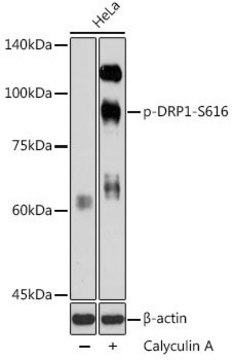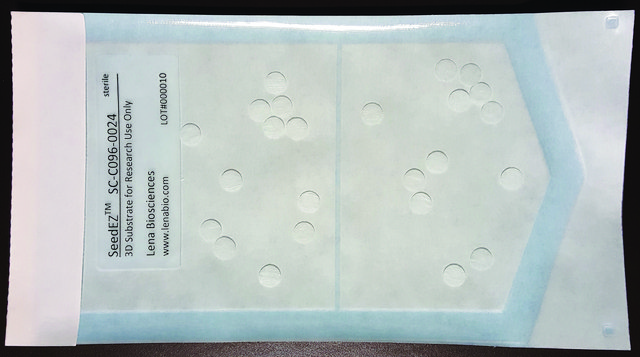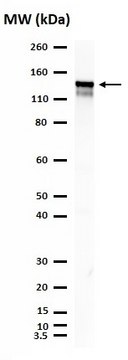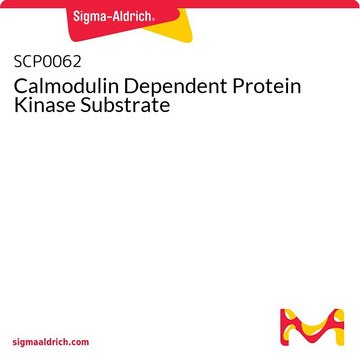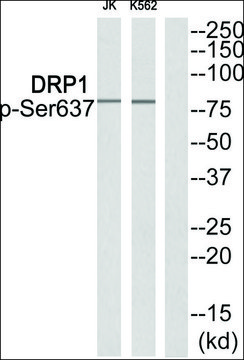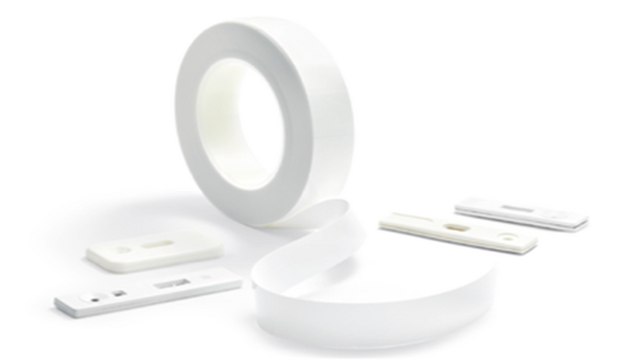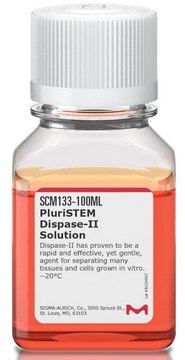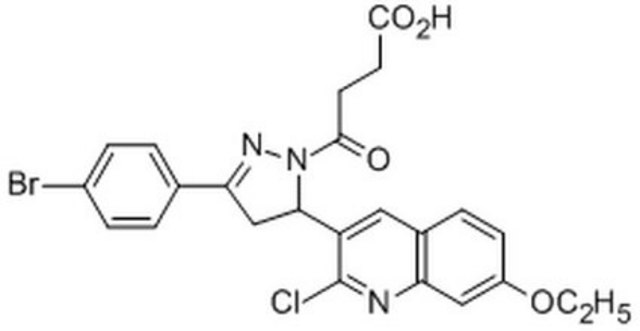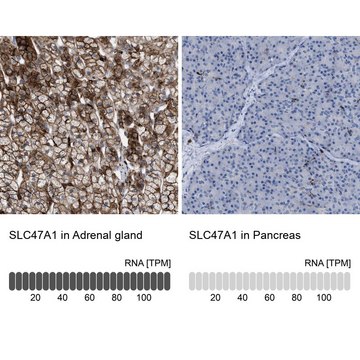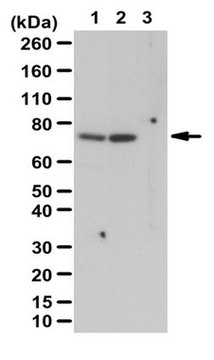一般描述
We are committed to bringing you greener alternative products, which adhere to one or more of The 12 Principles of Green Chemistry.This antibody is Preservative-free, produced without the harm or sacrifice of animals and exceptionally stable to allow for ambient shipping and storage if needed and thus aligns with "Waste Prevention", "Designing Safer Chemicals" and "Design for Energy Efficiency".
Click here for more information.
ZooMAb® antibodies represent an entirely new generation of recombinant monoclonal antibodies.Each ZooMAb® antibody is manufactured using our proprietary recombinant expression system, purified to homogeneity, and precisely dispensed to produce robust and highly reproducible lot-to-lot consistency. Only top-performing clones are released for use by researchers. Each antibody is validated for high specificity and affinity across multiple applications, including its most commonly used application. ZooMAb® antibodies are reliably available and ready to ship when you need them.
特异性
Clone 5G23 is a ZooMAb® Rabbit recombinant monoclonal antibody that specifically detects Dynamin-related protein 1 (DRP1) phosphorylated on serine 637.
免疫原
KLH-conjugated linear peptide corresponding to 11 amino acids surrounding phosphoserine 637 from the C-terminal region of human Dynamin-related protein 1 (DRP1).
应用
Quality Control Testing
Evaluated by Western Blotting in a construct containing an N-terminal MBP tagged and C-terminal His tagged recombinant phosphorylated DRP1 (Ser637) protein.
Western Blotting Analysis: A 1:10,000 dilution of this antibody detected a construct containing an N-terminal MBP tagged and C-terminal His tagged recombinant phosphorylated DRP1 (Ser637) protein, but did not react with non-phosphorylated DRP1 construct. (DRP1 construct: Courtesy of Dr. Jesse Rinehart, Yale University, School of Medicine)..
Tested applications
Western Blotting Analysis: A 1:1,000 dilution from a representative lot detected p-DRP1-Ser637 in lysate from NIH3T3 cells treated with Forskolin (50 mM)..
Peptide Inhibition Assay: Target band detection in a construct containing an N-terminal MBP tagged and C-terminal His tagged recombinant phosphorylated DRP1 (Ser637) protein fragment was prevented by preblocking of a representative lot with the immunogen phosphopeptide, but non the corresponding non-phosphopeptide.
Affinity Binding Assay: A representative lot of this antibody bound p-DRP1-Ser637 with a KD of 1.3 x 10-6 in an affinity binding assay.
Note: Actual optimal working dilutions must be determined by end user as specimens, and experimental conditions may vary with the end user
目标描述
Dynamin-1-like protein (UniProt: O00429; also known as EC:3.6.5.5, Dnm1p/Vps1p-like protein, DVLP, Dynamin family member proline-rich carboxyl-terminal domain less, Dymple, Dynamin-like protein, Dynamin-like protein 4, Dynamin-like protein IV, HdynIV, Dynamin-related protein 1) is encoded by the DNM1L (also known as DLP1, DRP1) gene (Gene ID: 10059) in human. DRP1 is a ubiquitously expressed, homotetrameric protein that plays an important role in mitochondrial fission during mitosis. DRP1 mediates membrane fission through oligomerization into membrane-associated tubular structures that wrap around the scission site to constrict and sever the mitochondrial membrane through a GTP hydrolysis-dependent mechanism. Although DRP1 is essential, but it is not sufficient for mitochondrial fission and requires the recruitment of certain receptors that recruit the enzyme to the outer mitochondrial membrane. In mammals these receptors include MFF, MID49, and MID51. DRP1 phosphorylation/dephosphorylation at two sites near the GED domain (aa 644-735) regulates mitochondrial fission. Its phosphorylation at serine 637 by CaM kinase I and PKA inhibits the GTPase activity that leads to a defect in mitochondrial fission and promotes mitochondrial elongation. Dephosphorylation at this site by protein phosphatase 3 catalytic subunit a (PPP3CA) promotes the fission events. Phosphorylation at serine 616 by Cdk1 and PINK1 activates GTPase and promotes mitochondrial fission. DRP1 is also required for a normal rate of cytochrome c release and caspase activation during apoptosis and this requirement depends upon the cell type and the physiological apoptotic cues. Nine isoforms of DRP1 have been described that are produced by alternative splicing. Isoform 1 with canonical sequence is shown to be brain-specific. This ZooMAbZooMAb® recombinant monoclonal antibody, generated by our propriety technology, offers significantly enhanced specificity, affinity, reproducibility, and stability over conventional monoclonals. (Ref.: Kalia, R., et al. (2018). Nature. 558(7710). 401-405; Fröhlich, C., et al. (2013). EMBO J. 32(9); 1280-1292; Smirnova, E., et al. (2001). Mol. Biol. Cell. 12(8); 2245-2256).
外形
Purified recombinant rabbit monoclonal antibody IgG, lyophilized in PBS, 5% Trehalose, normal appearance a coarse or translucent resin. The PBS/trehalose components in the ZooMAb formulation can have the appearance of a semi-solid (bead like gel) after lyophilization. This is a normal phenomenon. Please follow the recommended reconstitution procedure in the data sheet to dissolve the semi-solid, bead-like, gel-appearing material. The resulting antibody solution is completely stable and functional as proven by full functional testing. Contains no biocide or preservatives, such as azide, or any animal by-products. Larger pack sizes provided as multiples of 25 μL.
重悬
300 μg/mL after reconstitution at 25 μL per vial. Please refer to guidance on suggested starting dilutions and/or titers per application and sample type.
储存及稳定性
Recommend storage of lyophilized product at 2-8°C; Before reconstitution, micro-centrifuge vials briefly to spin down material to bottom of the vial; Reconstitute each vial by adding 25 μL of filtered lab grade water or PBS; Reconstituted antibodies can be stored at 2-8°C, or -20°C for long term storage. Avoid repeated freeze-thaws.
法律信息
ZooMAb is a registered trademark of Merck KGaA, Darmstadt, Germany
免责声明
Unless otherwise stated in our catalog or other company documentation accompanying the product(s), our products are intended for research use only and are not to be used for any other purpose, which includes but is not limited to, unauthorized commercial uses, in vitro diagnostic uses, ex vivo or in vivo therapeutic uses or any type of consumption or application to humans or animals.

